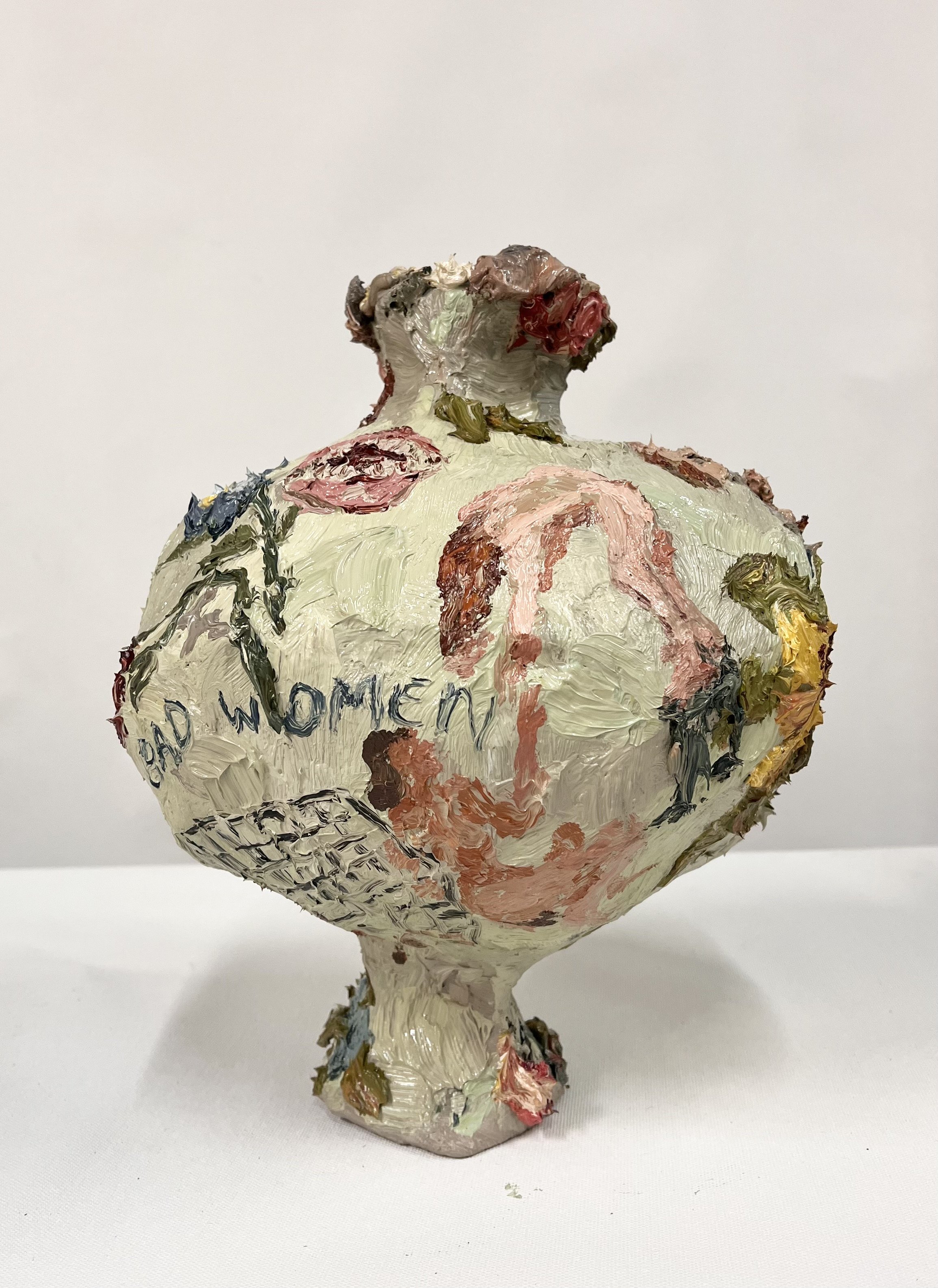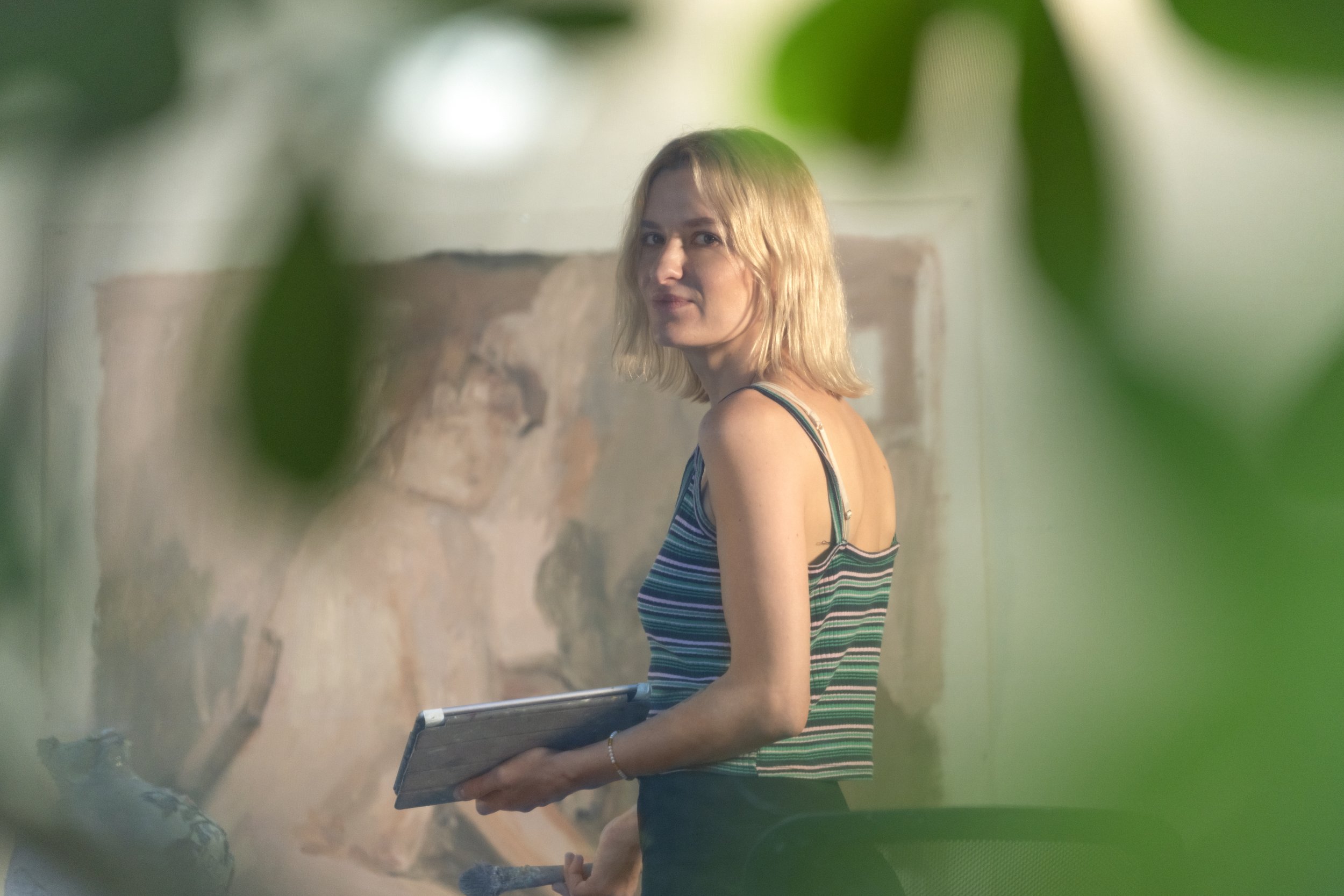November 2023
Mia Chaplin
Film directed by Alexa Caravia for Fountainhead Arts
“Women are portrayed in art history as the virgin, the mother or the witch,” says artist Mia Chaplin. “I like to have a woman that encapsulates all those things in one.” Her work expands the vocabulary of feminist representation by combining softness and vulnerability with undercurrents of menace and the grotesque. She is preoccupied by the relationship between sex and violence — specifically, the double-bind faced by women, who must protect themselves and also fight back to reclaim bodily autonomy. In her heavily impastoed paintings and mixed-media sculptures, she teases out dichotomies like living and dying, beauty and ugliness, ferocity and fragility.
Trained as a painter, Chaplin reworks art-historical tropes from a feminist point of view. In this way, her work is reminiscent of artists like Cecily Brown. She begins by creating “glitchy collages” of figures in Photoshop, which she then manipulates by using a digital eraser tool. Her resulting compositions, built up with thick layers of oil, reside between figuration and gestural abstraction.
Theatricality and historical specificity infuse her canvases. She based a recent work, Nymphs (2023), on John William Waterhouse’s pre-Raphaelite painting Hylas and the Nymphs (1896). Waterhouse’s painting made headlines in 2018 when it was temporarily removed from the walls of the Manchester Art Gallery, as part of a feminist intervention by the artist Sonia Boyce. In Waterhouse’s original, bare-breasted, pale-skinned adolescent girls beckon the mythological Hylas into the water; in Chaplin’s Nymph, viewers are plunged into the center of a swampy scene, among densely painted female figures. In terms of stylistic influences, Chaplin points to modernist Frank Auerbach, who uses “basically a swath of color as a leg,” calling his work “beautiful, but also kind of gross.” Soft Shell (2023), Chaplin’s painting of a figure pleasuring themselves, emulates his heavy, wide brushstrokes.
Chaplin began making three-dimensional work around 6 years ago. She often creates vessels and net-like forms, favoring the materials of wire, papier-mâché and plaster of Paris. While she considers her painted vases reminiscent of a “pregnant belly,” she likens her spiky, wire-gridded vessels — which resemble a cage or a skeleton — as “rebellious,” “anti-mother” forms. Even in these works, the artist undercuts innocence with seediness. On the vase titled Baddie (2023), adorned with flowers, Chaplin has painted self-identified BAD WOMEN pictured with roses, a cigarette, and a knife. Typical of Chaplin’s women, they appear ready to defend themselves at any moment.
Words by Wendy Vogel






